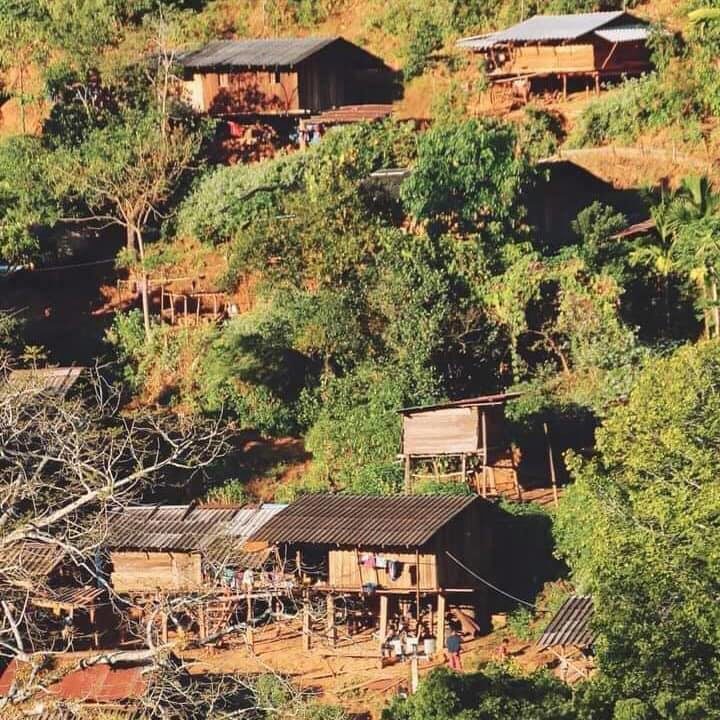Omkoi ethnic president cited information against Srisuwan Yan, Mae Kep, has been in existence for 100 years.
Follow the news, press follow line fresh news
case Mr. Srisuwan Chanya President of the Association against Global Warming Issued a statement stating the case of Pimri Pie Help install Solar Shell. And organized creative activities in Mae Kip Village, Na Kien Subdistrict, Omkoi District, Chiang Mai Province.The village will be a new village. Because satellite images are dyed after less than 7 years Previously, the area had no houses and people lived. And expected to be in the wildlife sanctuaries;
Same day Mr. Tanya Netithamakul Director-General of the Department of National Parks, Wildlife and Plant Conservation said he had already ordered the inspectors to find thatNot in the Koi wildlife sanctuary Which the village of Mae Kep is more than a hundred loos from Omkoi forest It is also located about 30-40 kilometers from the Mae Ngao National Park Office (preparatory), which is expected to be located in the Omkoi National Forest.
Mr. Tanya Added that For communities in protected forest areas that the National Park Service There are a total of 4,265 communities of over 4.2 million rai. Which confirms that Mae Keb village is outside the forest conservation area
While the Conservation Area Administration Office (Sorbor.) 16 (Chiang Mai), the National Park Department Additional reports that Mother Keb House It is a home area of Baan Sala Them 15, Na Kian Subdistrict, Omkoi District, Chiang Mai Province, located in the Omkoi National Forest Reserve. The villagers are Thais. Karen hill tribe has a population of 177 people and 41 households. The village is located on the steep mountain backcountry, 240 km. From Chiang Mai via the Omkoi route. Entering the area requires a four-wheel drive vehicle. Most of the people who work for the main occupation are rice farming, revolving rice fields for consumption and general employment.
In the area there are NESDB Ban Mae Keb (Mae Fah Luang Community Learning Center), under the supervision of the Office of the National Institutes of Thailand, with 2 teachers and 44 students located away from the Mae Chang Watershed Management Unit. To the northwest for a distance of 38 kilometers, with the community settled in the area before the establishment of the Forest Development Project, Unit 3 (Mae Chang) or the Mae Chang Watershed Management Unit at present in Year 1979
Mae Kep Village Located outside the area responsible for the Agricultural Development Station at Ban Na Kien And the mother’s house It is 129 km from Omkoi Wildlife Sanctuary Office, 85 km from Omkoi Wildlife Sanctuary and 30 km from Mae Ngao National Park Office (preparatory), and away from Mae Ngao National Park (Prepare A) 6 km
side Mr. Adisorn Nuchdamrong The Director-General of the Forest Department said Mae Keb village was separated from the old village nearby. Due to the fire in the old village Which the community believes that the village that has already been burned should not remain Therefore migrated to the present area, but still in the area of shifting cultivation of the villagers
This village is located in a watershed area, floor 1,2, therefore, it is unable to enter the project to provide farmland for the community according to the government policy (NTC). Land and forest According to the Cabinet resolution June 30, 1998, 72 plots were surveyed and determined to be certified, which would be a supportive coexistence with the forest, such as the forest building project, income-generating, 3 forest plantation, 4 benefits etc.
side Mr. Piboon Tuakonthon Chairman of the Omkoi ethnic network told IMN, a network of indigenous burns, said Mae Kip village It is named after the creek that runs through the south side of the village. Named Sung Huai Mae Kep It is a village of the Pwo Karen hill tribes.
Mae Kep village has been settled in this area for over 100 years.And most of them would respect ghosts and work in rice cultivation And raising animals such as cattle, pigs and chickens, etc. There is a mountain water supply with water used all year round.
Thank you picture from the page IMN Indigenous Media Network
–


